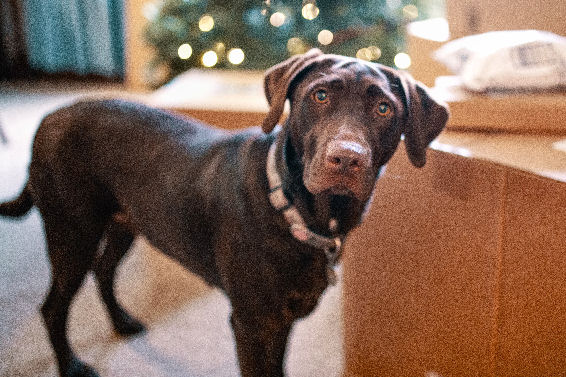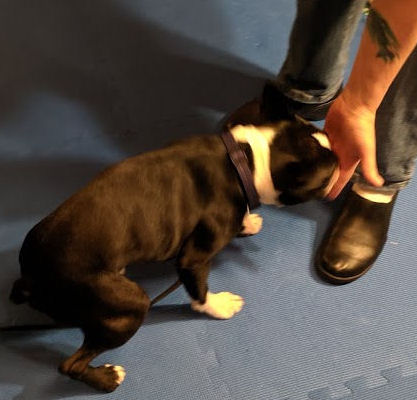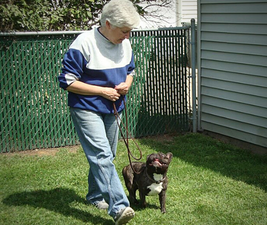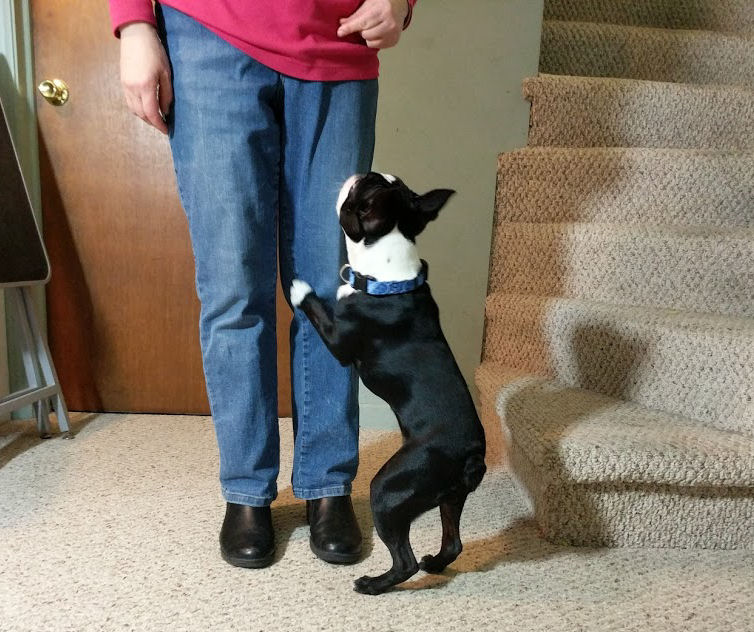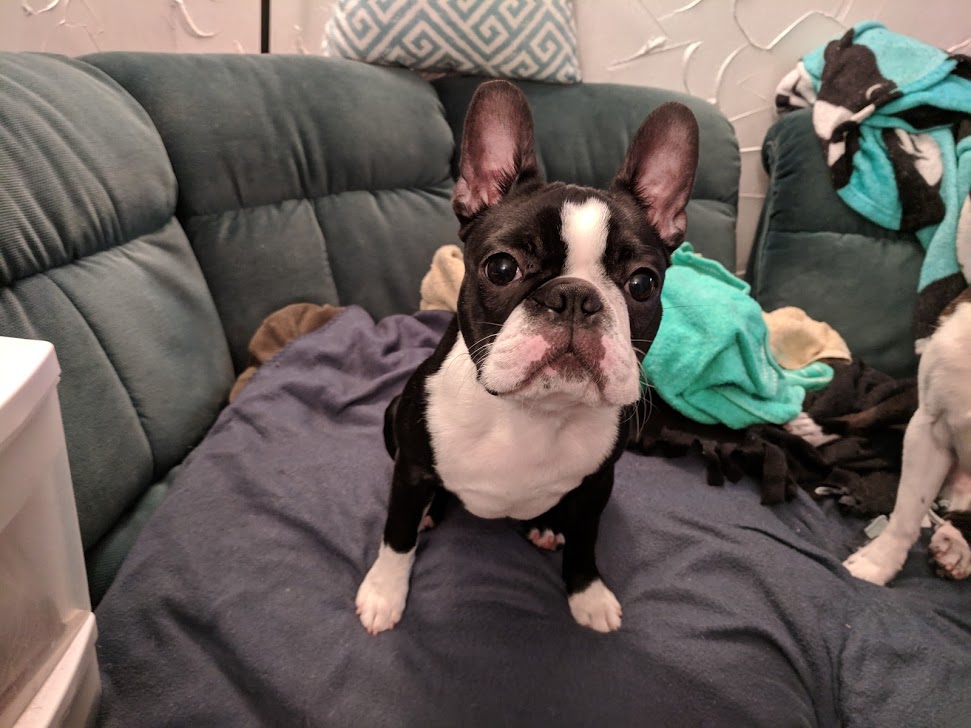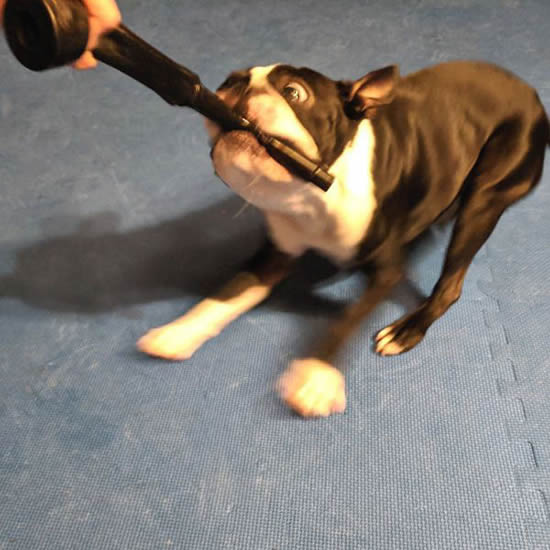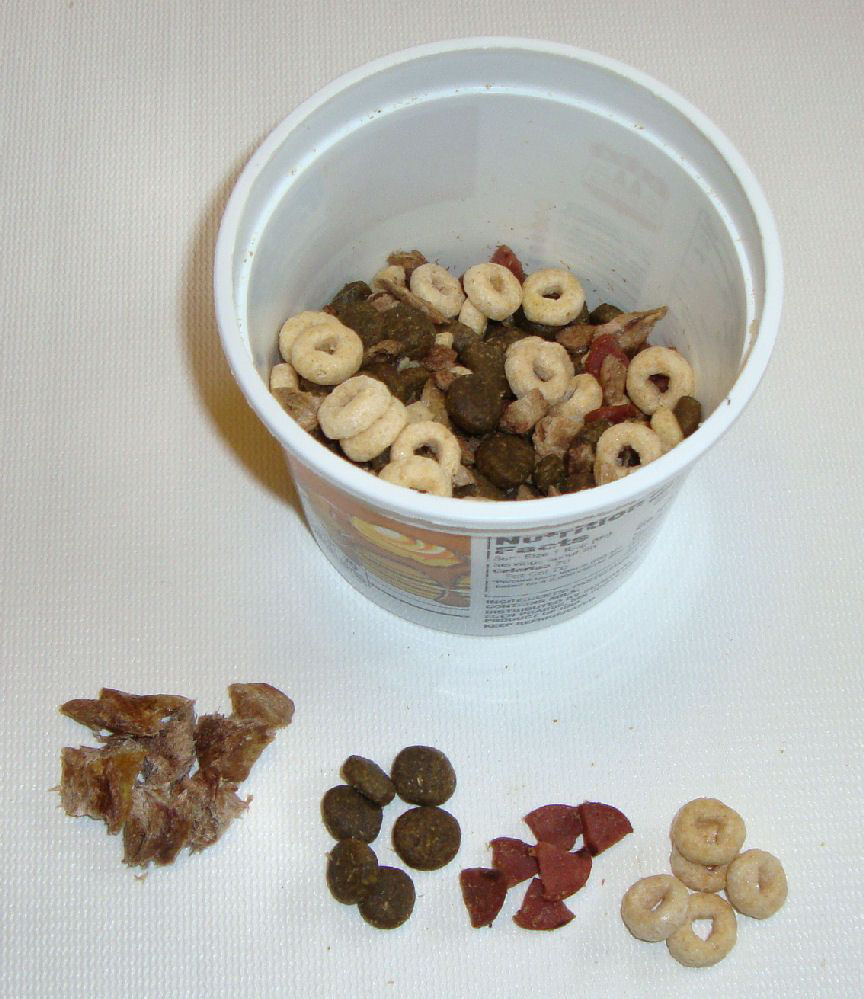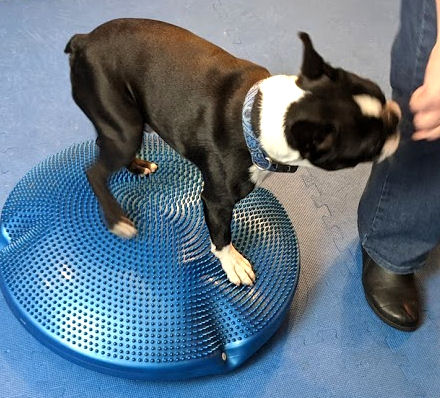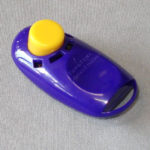Dogs are sponges. They watch, and absorb. And dogs learn from other dogs, as well as from people.
One of the great things about having multiple dogs is that they do learn from each other. It’s easier to housebreak a puppy when you have an older, housebroken dog. The puppy copies what the older dog does. Same thing with the household routine. If the already-trained dog waits to go out the door until it’s allowed, the puppy will figure out the rules, too.
Idol worship
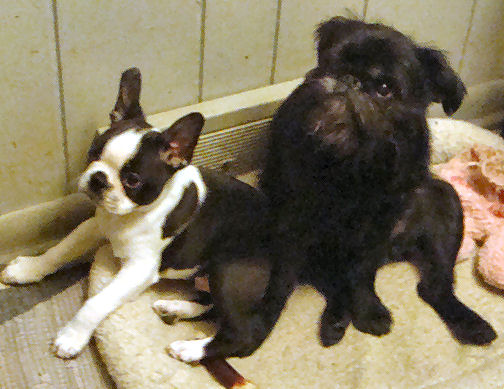
It helps if the older dog is puppy-friendly and likes having the little one around. They will be more tolerant of puppy shenanigans, and actively teach the puppy what’s okay and what’s not. When the play gets too rough, you may see the older dog holding the puppy down. It’s entirely appropriate and teaches the pup when enough is enough.
Puppies tend to be single-mindedly selfish little creatures. They want what they want when they want it. If they see another dog waiting patiently for food or other desirable thing, they’ll learn to emulate that behavior. However, for everyone’s safety, we do recommend separating, even crating the puppy for feeding time. This has the dual benefit of teaching the puppy that crates are good, and making sure the older dog won’t feel they have to guard a valuable resource like food. The older dog will probably also appreciate a chance to relax and enjoy his meal without worry.
Flip side of the coin
Dogs learn all kinds of wonderful things by watching other dogs. Ours seem to absorb the training games we play just by watching. When it’s their turn, they jump right in, seeming to know stuff we don’t remember teaching.
The downside is that puppies also absorb all the things you’d rather they wouldn’t, too. And they tend to learn the “bad” stuff even more quickly than the good stuff.
If you have one dog that barks at any movement on your street, the puppy will probably develop the same habit, too. To avoid perpetuating the cycle, you have to take an active role. Because it’s almost impossible to train two dogs at the same time, you must set your priority.
Barking up a storm
In the barking example – if the dog has been doing it for any length of time, it’s going to take a concerted, consistent effort to change the habit. Rather than trying to “fix” the older dog’s behavior, it’s simpler to avoid the situation with the puppy. By nature, some dogs are “better” watchdogs than others, but all can become barkers.
When the older dog barks, the puppy will probably run to see what’s going on. To show they’re being a good student, they may even join the barking, without even knowing why.
Instead of yelling at everyone to “be quiet!” – call the puppy and run the other way. Find a toy and start playing. Turn the other dog’s bark into a reason to come to you! If you’re a lot of fun and your game plan is exciting, you may even get the older dog to join the fun, rather than persist in barking. (We discussed another way of “breaking the feedback loop” a little while ago.
Timing is never good
There’s never really a “good” time to get another dog. Life has a way of interrupting plans. If you’re considering adding another dog to your family, it’s best to be ready when the opportunity presents.
To get ready – take an honest look at the dog you already have. Are there any behaviors or habits that you’d hate for a puppy to develop? If so, now is the time to teach your present dog to be better. Develop a plan, setting the goal you want to achieve. Then back-chain the steps you need to take to get there. Turn each step into a training game.
With a plan in place and a goal in mind, even if the puppy doesn’t show up at your doorstep, the dog you have will benefit from training games. You’ll both be happier.

